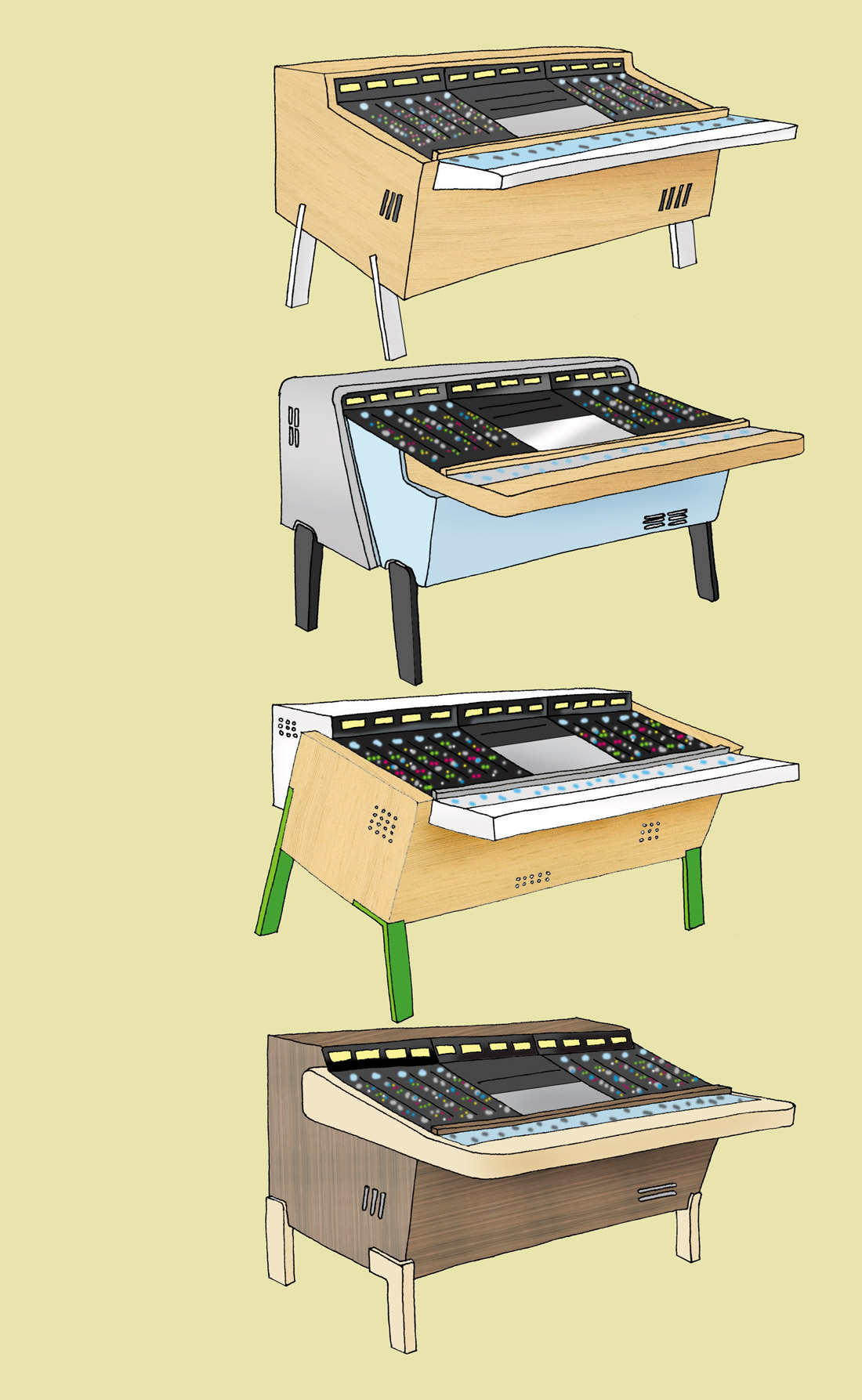Doubtless the most famous microphone preamplifier in history, the Neve 1073 has spawned countless imitations — from cheap knockoffs to component-precise replicas. The sincerest flattery has been repeatedly bestowed upon the venerable classic since its inception over 40 years ago. If you need a quick primer on what this preamp has meant to the recording industry, check out Allen Farmelo’s article in Tape Op #77 about Neve-style preamps.
The 1073LB is the first Neve-branded anything that goes into a 500-series rack — the LB stands for Lunchbox — and as such, is the cheapest anything that can be acquired with the Neve name on it. The main benefit of the 500-series format is that power is supplied by the rack itself, so once you have a rack, modules tend to be lower in price than standalone units with their own power supplies and chassis. One of the drawbacks is that the amount of current that is available to each module in a populated rack is generally lower than what can be delivered from a dedicated power supply (although there are different current ratings depending on which brand and model of rack you get), which can affect headroom and overall sound quality. The other drawback of the 500-series format is the small faceplate. The faceplate of the 1073LB manages to fit a familiar 22-position ELMA 04 rotary switch for mic/line gain; a trim pot that also doubles as a +48V push-switch; an XLR/TRS Combo jack (which does not function as an instrument-level DI, as some might assume at first glance); and three latching buttons for polarity reversal, lower impedance on the mic input (300 ohm as opposed to 1200 ohm), and for activating the front input. (The last one also handily doubles as a mute switch when nothing is plugged into said front.) There is also a small LED that glows green when signal is present and turns red when the unit is clipping.
So how does the 1073LB sound? In short, it sounded quite good on everything I ran through it in a couple of months of daily studio use. Vocals, snare, kick, bass, electric and acoustic guitars — everything worked really well through the 1073LB, which often beat out my other preamps in A/B tests. More often than not, and especially with ribbon mics, I preferred the 1073LB in Lo-Z mode, even after adjusting for the additional gain the lower impedance adds. I own a couple of Vintech X73i preamp/EQs (Tape Op #47), which do a mighty-fine job of riding on the coattails of the classic 1073, so I did some comparison tests between them. There was very little difference between the two, although if pressed, I would say the 1073LB had a very slightly healthier low-midrange and a very slightly smoother top end. The X73i was just a wee, wee bit brighter than the 1073LB, but maybe not in a nice way.
Wanting to run a Neve-on-Neve test, I brought the 1073LB into Tiny Telephone (Tape Op #10) for a tracking session with the band Man/Miracle. Tiny has a pair of vintage Neve 1089 modules that I’ve always loved the sound of, which are essentially 1073s with different input architecture. (Oh yeah, by the way, classic 1073/1089 modules have a three-band EQ section plus a high-pass filter. The 1073LB does not, although I really wish they’d included at least the filter, even for a few extra bucks.) I found the 1073LB to be noticeably darker than Tiny’s 1089s, but with a huskier midrange, which worked really well for a throaty lead vocal through a Josephson C715 mic (Tape Op #78). For kick drum and bass guitar, I preferred the 1089 for the extra top-end presence. I came away from these tests feeling like the 1073LB was as “good” a preamp as the classic Neve, if just a little different. It’s also important to keep in mind that even vintage Neve modules usually differ from each other in some small way.
I only have a few functional gripes with the 1073LB. First and foremost, I wish they’d just dedicated a switch to phantom power; it’s way too easy to accidentally engage it while adjusting the trim (which makes me a little wary to use it with my pricey ribbon mics, despite its whopping 80 dB of gain). In addition, the fact that the +48V automatically disengages when the gain switch position is turned from mic to line is kinda strange, although it functions this way for protection purposes — there is a shared physical input for both gain stages. Also, 10 dB of trim attenuation isn’t nearly enough when I want to saturate the inputs; I had to use a Little Labs Redcloud ( Tape Op #72) for additional output attenuation so that I could boost the input gain into harmonic distortion territory (where the 1073LB sounds really good, by the way) without clipping my recorder’s input. Then there’s the abovementioned desire for a filter. But otherwise, I’m pretty impressed by the 1073LB.
Whether or not old-guard 1073 aficionados find the 1073LB up to their standards, it is crystal clear to me that this is a great preamp at a very fair price, and one thing is absolutely certain: a “real” Neve preamp for about a grand means that the amount of studios boasting the name Neve on their gear list will increase exponentially in the months and years to come. ($995 street; www.ams-neve.com, www.vintageking.com)
–Eli Crews, www.elicrews.com
Amplifiers, Mic Preamps | No. 142
Camden EC2 Preamp
by Anthony Gravino
These days, it’s pretty rare to see a piece of audio equipment with an innovative feature set, but the Cranborne Audio Camden EC2 is indeed one of those rarities. It is a combination two-channel...




_disp_horizontal_bw.jpg)